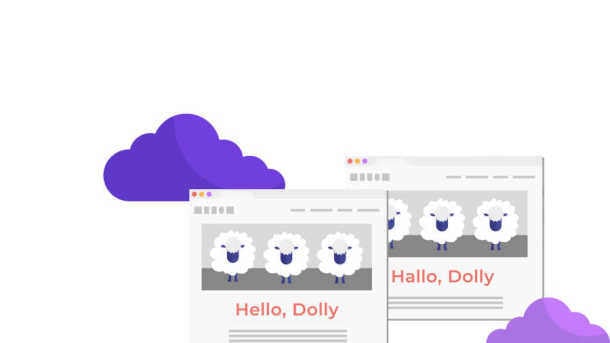According to a recent report from Shopify, global companies recently saw an amazing 25x ROI for every dollar they spent on localization. As Shopify makes clear, content must cater to a growing number of different geographical and cultural contexts to impact the bottom line, which in a nutshell means good translation has never been more essential.
Not surprisingly, many companies are turning to Smartling to manage localization at scale. And at the beginning of their UI translation journey, most companies ask us a familiar question: “How can we prepare our UI to ensure that translations are as accurate as possible?”
As with most things in life, smart preparation often leads to better outcomes. Well prepared source content leads to better context, increased accuracy and more conversion. Developers just getting started with Smartling can benefit by following these six technical tips when preparing UI for translation.
1. Use the Tech Stack You Have
Virtually every modern technology stack either contains built-in internationalization and localization features (as is the case for iOS and Android app development) or can be adapted to provide such features. Don’t waste time or effort trying to build these features on your own; stand on the shoulders of the giants that came before you. Dig into your exact tech stack and let your application environment dictate how you should go about preparing UX content for translation.
Native app translation can often be pretty straightforward. Exact processes for translating strings of code will depend on the language you are programming in. For example, processes for localizing iOS apps vary between the newer Swift iOS programming language and the older (but still very popular) Objective-C language. Whichever language they are using, iOS developers can extract all the strings that are either in the code or part of the user interface files by following these instructions.
Web applications add a layer of complexity, as most web app tech stacks involve multiple pieces of technology that all serve different functions. A developer must consider how each part of their stack handles translation — and determine the best way to localize each part.
If it sounds like your tech stack will become a complicated, unwieldy mess, don’t fret. Some tools have localization built-in and others don't, but in the end most developers will find that there are technologies they can use and adopt. So, don't try to do it from scratch. Leveraging baked-in features and libraries will greatly ease translation and lead to more successful translation and localization outcomes. With familiarity, experienced developers for the most part find it easy to follow processes.
2. Understand how Smartling Captures Content
When a developer sends a file to Smartling for translation, we ingest, capture and parse the strings from their file. But (as we just examined) not all platforms use the same file format and not all strings are extracted the same way from them. For example, by default Smartling knows how to handle the structured and localization specific iOS strings and Android XML file formats. Those platforms dictate the exact syntax for content there and even specify how to format variables, provide translator instructions and a number of other features that Smartling supports out of the box without any customization. However JSON and XML files are generic data formats. They are not localization specific. So to get the right behavior from Smartling you might need to “integrate” the files to get the Smartling to handle them correctly.
To gain this understanding, we recommend that our customers take one (or both!) of the following approaches:
- Proactively read our documentation.
- Examine the strings from your file in Smartling after uploading it. Do your strings look reasonable? Does anything look odd? Is nontranslatable content such as variables and markup “masked”? If so, you probably need to customize how your strings are translated.
3. Leverage Smartling’s Pseudo-Translation Feature
We offer a lightweight “faux-translation” feature that helps developers save time and money, without having to go through the full translation process with every build. Our Pseudo-Translation feature provides a ‘translated’ version of your file that is still readable and by anyone in the native language because it just adds accents, squiggles (tildes) to the original strings — allowing developers to run preliminary tests of their application, while still permitting the tester to read the app during testing.
These “faux-translations” can work wonders during preliminary UI testing. Testers can use the fake translation to try to run an app and quickly determine if there are any bugs or issues that require immediate resolution — bugs, hidden translations, missing buttons, error messages that don’t work, etc. This is usually more effective than trying to get even a quick and dirty raw machine translation because it’s comprehensible in the original language; so everyone on the development and testing teams can easily work with it.
If you automate your tests, our Pseudo-Translation feature is a very low cost way to make your app better as quickly as possible. Testing this way makes sure that your file can survive the round trip with Smartling and still function correctly in the app. You’ll learn quickly if you either need to integrate your file or if your integration is not quite ready for prime-time. Bake this feature into your app build or launch.
4. Add Translator Instructions to Files
We believe that the world moves on words. And words can be used to help the very translation process itself! If your tech stack supports it (and many do), add notes and comments to your strings for Smartling translators.
In application user interfaces, a string most commonly represents very small parts — a single word, line, or sentence. Without context, translators sometimes don’t understand intent, or see how a string relates to the larger whole. Your instructions help provide the translator with valuable context that could affect the way text is treated.
As for what kind of context to provide, the sky's the limit. Notes and comments can describe almost any part of your UI — the visual context within the app, or a general explanation of what is around that specific string.
5. Add Visual Context
When translating an application, our Translators will work with plain strings and instructions.. Application resource files don’t contain any visuals — only text, and maybe instructions — which can sometimes leave out important context that could affect a translation.
For this reason, Smartling has features that will help developers add visual context to their files. If a picture is worth a thousand words, why not give your translator as much context as possible?
6. Make Sure Source Content is Well Written From the Start
As the old adage goes, “your output will only be as good as your input.” If there are problems with source copy, there will always be issues with the translation process. Some translators may be able to spot errors before or while translating, but it’ll interrupt the process, slow down translation, and open up room for error.
Bottom line
Properly prepared source content leads to better business results. Developers can make their own lives easier (and grow the bottom line) by paying careful attention to the technical details that make translations accurate.






